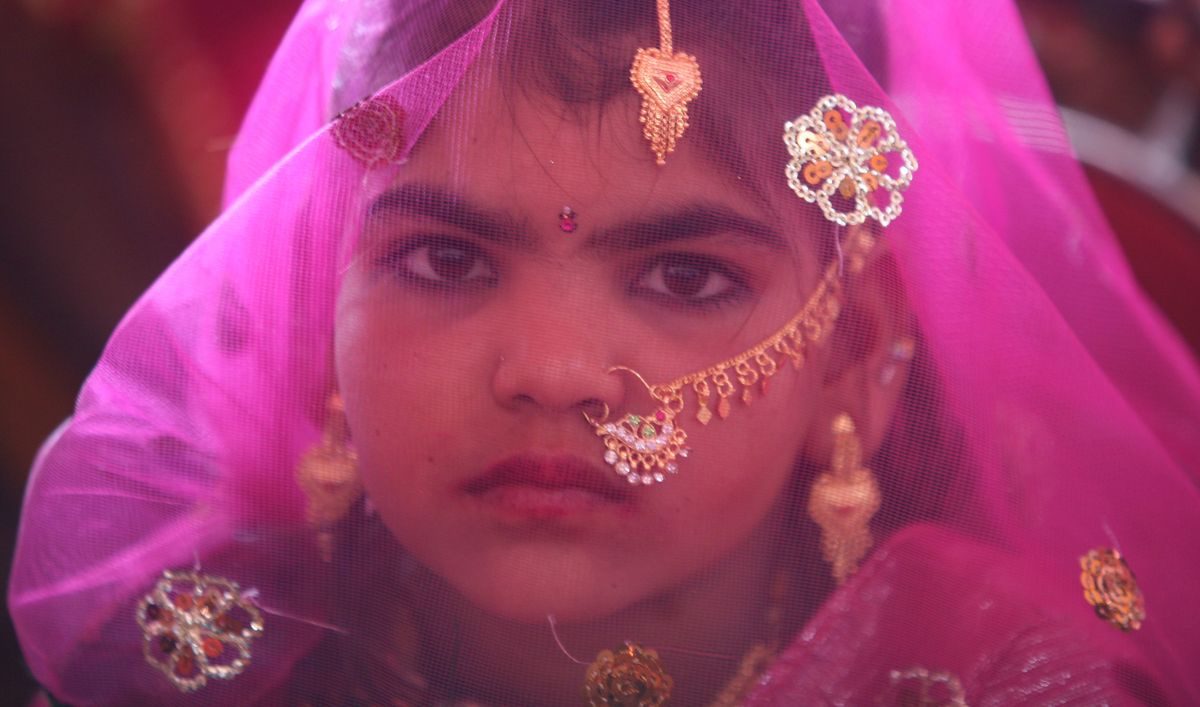Child marriage is still a big problem, and it’s going to take centuries to fix
Child marriage, the act of marrying off people (usually girls) under 18, is still pretty common around the world.

A few minutes every morning is all you need.
Stay up to date on the world's Headlines and Human Stories. It's fun, it's factual, it's fluff-free.
The backstory: Child marriage, the act of marrying off people (usually girls) under 18, is still pretty common around the world. While the reasons behind child marriage can vary from culture to culture, it’s more often than not to consolidate family wealth and obtain a certain social status. In some communities, families may marry off their children in an effort to protect them from poverty and sexual violence or to protect their virginity before they reach puberty.
There tends to be a correlation between poverty and crisis and child marriages. So, with that, COVID, ongoing conflicts and climate change have all made it more difficult to see progress on ending this practice. Today, child marriage takes place worldwide, but most notably in places like South Asia, Latin America and central, west and sub-Saharan Africa.

The development: A new report released by UNICEF shows that the world has made some progress when it comes to decreasing the number of child marriages taking place. Now, one in five women between the ages of 20-24 were married as children. This is compared to a decade ago when the statistic was nearly one in four. This has been driven mostly by progress in India, the now most populous country in the world. But the South Asian nation is still home to the most child brides in the world.
According to the same report, though, COVID has slowed progress on the issue, with school closures, economic insecurities and the upending of personal situations leading to 10 million more young girls becoming brides by 2030.
At the current rate of progress, the report also says it will take 300 years to get rid of child marriage completely.
Key comments:
"The report confirms that we have made progress in eliminating child marriage. But the report also indicates that the progress is not universal and is not fast enough," said Claudia Cappa, a senior adviser at UNICEF and an author of the new report. "
“South Asia leads the world in reducing the prevalence of child marriage: In the last decade alone, a girl’s likelihood of marrying in childhood has dropped by nearly half, from 46 per cent to 26 per cent. Of all child marriages averted in the past 25 years, 78 per cent were in South Asia. This progress is driven largely by India, although notable declines have also been seen in Bangladesh, Maldives and Pakistan,” wrote the report. “Despite global advances, reductions are not fast enough to meet the target of eliminating the practice by 2030. In fact, at the current rate, it will take another 300 years until child marriage is eliminated,” the report wrote.




Comments ()